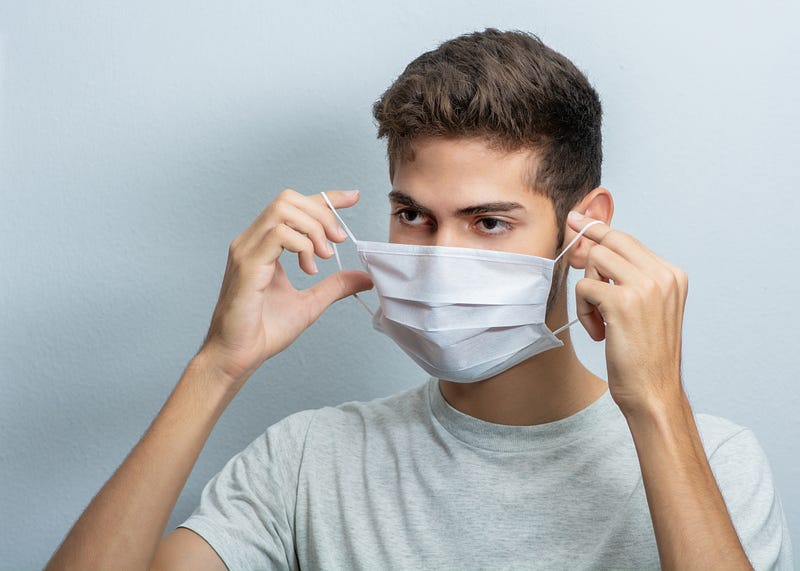Understanding Viral Shedding: Debunking COVID Conspiracies
Written on
Chapter 1: The Allure of Conspiracy Theories
I often find myself exploring certain corners of the internet where conspiracy theories thrive. My intent isn't to argue but rather to observe the prevalent misconceptions circulating.
As vaccines for COVID-19 have become widely available and promoted, numerous theories have emerged, warning of their purported adverse effects. These theories range from financially driven claims, such as the assertion that mandatory vaccinations are merely a scheme for pharmaceutical companies to increase profits, to more health-related concerns, suggesting that vaccines are a means of genetic manipulation.
Today, we will examine one specific health-related theory: viral shedding. This term, often used by conspiracy theorists, implies that vaccinations could make individuals sicker. However, by expanding our knowledge, we can dispel these fears.
What exactly is viral shedding? What do conspiracy theorists claim about COVID and viral shedding? Is there any actual risk associated with viral shedding and the COVID vaccine? By the end of this article, you should feel more informed and less anxious about such alarming terminology.
What is Viral Shedding?
Viral shedding refers to the process by which viral particles exit an infected host and can be transmitted to others. When a virus infiltrates a person's body, it begins to replicate, commandeering our cells to produce more copies of itself. These new viral particles eventually burst from the host cells, allowing for further spread to other cells.
Viruses don't restrict themselves to just one individual; they aim to infect others. We release these viral particles into the environment through various means, including saliva (e.g., talking or breathing), nasal secretions (e.g., sneezing), and feces (e.g., flatulence).
This method of viral shedding is one of the reasons diseases like COVID-19 can be so perilous; an infected person can transmit the virus even before showing any symptoms. It's worth noting that viral shedding isn't exclusive to humans; it also occurs in other infected species, such as chickens in crowded farming conditions.
In summary, viral shedding describes how viruses propagate from one infected entity to another via respiratory, salivary, and other bodily emissions. So how does this concept relate specifically to COVID-19?
First, let's delve into the conspiracy claims.
What Do Conspiracy Theorists Say About COVID and Viral Shedding?
Recent conspiracy theories surrounding the COVID vaccine assert that not only does it pose a risk to the vaccinated individual, but it also endangers everyone around them! According to these theories, vaccinated individuals will produce COVID particles similar to those produced during an active infection and subsequently shed them, potentially infecting others.
Proponents of this theory argue that these shed COVID particles could result in various health issues, including fertility problems or miscarriages, even among those who have not been vaccinated. This claim rests on the notion that the spike protein generated by the vaccine resembles syncytin, a protein vital for placenta formation.
However, this assertion has been thoroughly debunked. Our immune system is adept at distinguishing between the COVID spike protein and our natural syncytin.
Interestingly, this theory has prompted some vaccine skeptics to reconsider wearing masks—not as a means of preventing virus transmission but to guard against the purported risk of exposure to shed viral proteins from vaccinated individuals.

Is There Any Truth to This Theory?
In short: no.
Several inaccuracies underpin this theory:
- The spike protein produced by mRNA vaccines has not been linked to fertility issues or miscarriages.
- Shedding occurs with live viruses, not with the protein produced by vaccines. Therefore, vaccinated individuals do not shed this spike protein.
To elaborate: conspiracy theories around viral shedding mistakenly conflate the actual COVID virus with the vaccine. When vaccinated, individuals receive RNA—temporary biological instructions that teach their cells to create a specific component of the virus. This enables their immune cells to recognize and combat that component if they later encounter the actual virus.
First, the quantity of viral protein components produced post-vaccination is limited, insufficient for shedding. Moreover, the immune system effectively eliminates the spike protein within 48 hours.
While the spike protein may bear some resemblance to naturally occurring proteins, it is not similar enough to confuse our immune system.
Secondly, shedding is a phenomenon associated with live viruses; it does not occur with the isolated protein generated by vaccination. Even if someone were to inhale a minute amount of this spike protein, it cannot replicate, posing no risk of infection to bystanders.
Though the term "viral shedding" may seem alarming, it simply describes how a sick individual releases viruses into their environment. This does occur with COVID-19, explaining its contagiousness, but it does not apply to the vaccine, which only prompts the production of a small, non-replicating fragment of the virus.
Concerns have been raised regarding the similarity between the viral spike protein and syncytin, but these claims have also been disproven. Viral shedding is a crucial reason for isolating individuals infected with COVID-19; however, there is no need for concern regarding shedding of the minor protein fragment produced by the vaccine.
Chapter 2: Misinformation in the Era of COVID-19
The first video, "The Conspiracy Virus: COVID-19 misinformation in the US | The Listening Post," explores the spread of misinformation surrounding the pandemic and its implications on public health.
The second video, "Lancet article condemns COVID-19 conspiracy theories," presents an authoritative critique of the false narratives surrounding the pandemic.